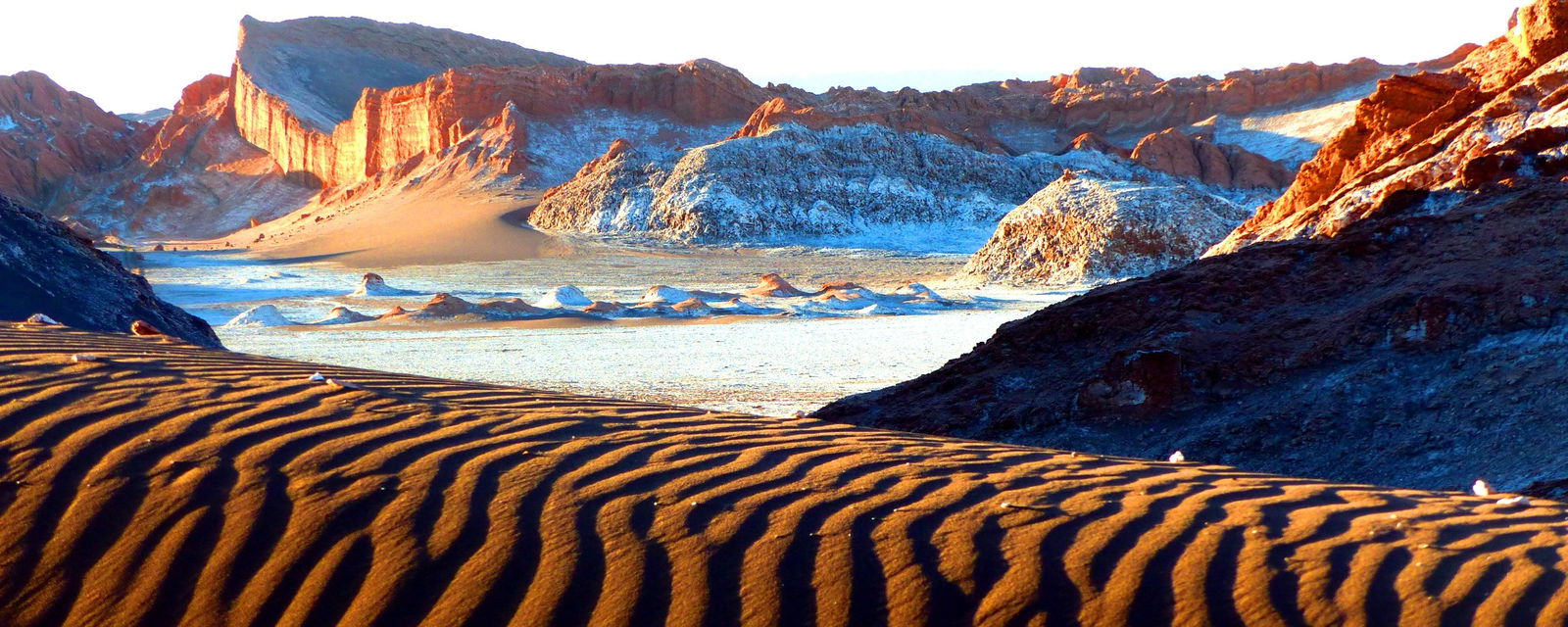


West of the Andes, the Atacama Desert covers about a 600-mile strip of land. It is considered one of the driest (if not the driest) deserts in the world. Day temperatures can get as high as 105 degrees. Because of its location along with several other factors, this is one of the few places that has 300 plus days of perfectly clear skies, making it a location frequented by astronomers. Given the extreme beauty of the sand and rock formations throughout and around Atacama, tourism in the area has dramatically increased over the years. It also incidentally was the site where one of the world’s oldest mummies was uncovered, predating Egyptian mummies by thousands of years.
Located in the Rio Grande Basin, the Rainbow Valley is so named because of all of the majestic colors here. The mixture of minerals and clays produce red, blue, green and yellow. Exploring this valley is definitely worth the trip.
This is the planet’s highest geyser field (and third largest in the world) boasting right around 80 individual geysers. Early in the morning, the lower temperatures stop the steam from evaporating, the result: an astounding experience. It is quickly becoming one of Chile’s most visited, and photographed, places.
At 28 percent salt, (nearly as much as the Dead Sea) this is a place where you can cool off and simply float for a bit. A truly tranquil and relaxing spot, there are showers there for rinsing off afterward.

The Atacama Desert experiences winter from June to August. Although the region is known for its year-round arid climate, winter nights can get quite cold, with temperatures dropping significantly. Daytime temperatures, however, remain mild and comfortable. Winter is a popular time to visit the Atacama Desert due to the lower tourist numbers. Stargazing opportunities are exceptional during this season, as the clear skies offer breathtaking views of the stars and galaxies.

Spring in the Atacama Desert, from September to November, brings pleasant temperatures and occasional rainfall. The desert comes to life with the blooming of wildflowers and cacti, creating a unique and colorful landscape. Spring is an excellent time for nature lovers to witness the desert's transformation and explore its various geological formations and salt flats.

The summer season in the Atacama Desert, from December to February, is the hottest time of the year. Daytime temperatures can soar, often reaching well over 90 degrees Fahrenheit. Despite the heat, summer is still a popular time for visitors to explore the diverse attractions of the region, such as the Valle de la Luna (Valley of the Moon) and the Tatio Geysers. It's important to stay hydrated and plan outdoor activities during the cooler hours of the day.

Fall in the Atacama Desert, from March to May, brings mild temperatures and cooler nights. The desert landscape remains stunning, and it's an excellent time to explore archaeological sites and the prehistoric petroglyphs found in the region. Fall also offers fantastic opportunities for birdwatching as migratory birds pass through the area.
